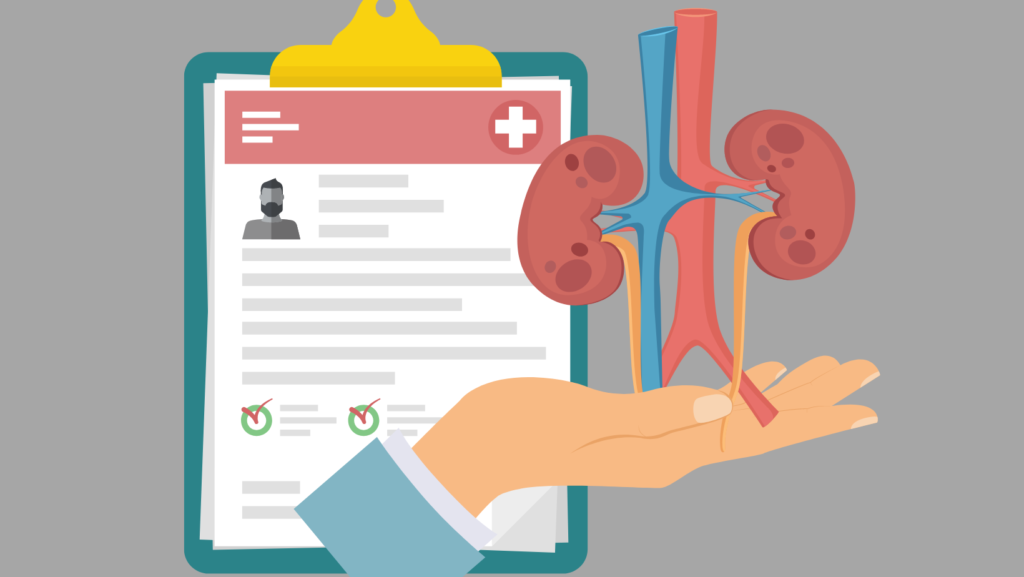A kidney biopsy is a medical procedure that involves removing a small piece of kidney tissue for examination under a microscope. Your doctor may recommend it if they don’t know what is causing your kidney disease. While a kidney biopsy can provide valuable information, it is important to understand the procedure and what to expect before deciding to undergo it.
Understanding the procedure and what to expect can help you feel more prepared and less anxious.
Key Takeaways
- A kidney biopsy is a medical procedure that involves removing a small piece of kidney tissue for examination under a microscope.
- Your doctor may recommend a biopsy if you have abnormal kidney function tests, blood in your urine, or unexplained swelling in your legs or feet.
- During the biopsy, a small needle is inserted through your skin and into your kidney to remove a tiny piece of tissue. You will be awake during the procedure, but sedated to help you relax and minimize discomfort.
Why have a kidney biopsy
If you’ve been experiencing symptoms of kidney disease or your doctor has detected abnormalities in your kidney function tests, they may recommend a kidney biopsy to help diagnose the condition and guide treatment decisions.
However, a biopsy is not always necessary, and your doctor will weigh the risks and benefits before recommending the procedure.
A kidney biopsy involves removing a small piece of kidney tissue to examine it under a microscope. This can help determine the cause and severity of kidney problems, such as inflammation, scarring, infection, or damage to the filtering units of the kidney.
The results of the kidney biopsy will often guide treatment.
Why would a doctor order a kidney biopsy?
Unexplained blood or protein in your urine: If you have persistent hematuria (blood in urine) or proteinuria (protein in urine), your doctor may want to check if there is any damage to your kidney tissue that is causing these abnormalities.
Unexplained kidney disease: If you have chronic kidney disease (CKD) or acute kidney injury (AKI) without a clear cause, a kidney biopsy may help identify the underlying condition that is affecting your kidney function. This can include autoimmune disorders, infections, drug toxicity, or genetic disorders.
Nephrotic syndrome and glomerular disease: If you have nephrotic syndrome, a condition characterized by high levels of protein in the urine, swelling, and low levels of protein in the blood, a kidney biopsy may help determine the type of glomerular disease that is causing these symptoms.
Kidney transplant evaluation: If you have received a kidney transplant and your doctor suspects that the transplant is not functioning properly, a kidney biopsy may help identify the cause of the problem and guide treatment decisions.
Overall, a kidney biopsy can provide valuable information about your kidney health and help your doctor develop an effective treatment plan that meets your individual needs. However, it is important to discuss the risks and benefits of the procedure with your doctor and understand what to expect before, during, and after the biopsy.
Types of Kidney Biopsy
There are several types of kidney biopsy, including percutaneous biopsy, open biopsy, laparoscopic biopsy, transjugular biopsy, and needle biopsy. The most common type of kidney biopsy is the percutaneous biopsy, which is done using a biopsy needle inserted through the skin and into the kidney.
Understanding the Procedure
During a percutaneous biopsy, a small needle is inserted through your skin and into your kidney to remove a tiny piece of tissue. You will be awake during the procedure, but sedated to help you relax and minimize discomfort. The biopsy typically takes less than an hour, and you will be monitored for several hours afterwards to ensure there are no complications.
With a percutaneous biopsy such as the one described above, there are no stitches.
During the biopsy, you will be given either a local anesthetic or general anesthesia, depending on the type of biopsy you are having. You will lie on your stomach or side, and the doctor will use ultrasound, x-ray, or CT scan to guide the biopsy needle to the correct location. The doctor will then take one or more tissue samples from your kidney using the biopsy needle.
The biopsy is commonly done on the left kidney, although any kidney may be biopsied depending on the reason for the biopsy and the findings when the kidneys are imaged.
Post Biopsy Procedure
After the biopsy, you will be taken to a recovery room where your pulse, blood pressure, and breathing will be monitored. You will be asked to rest for several hours and keep the biopsy site bandaged. Staying in bed helps the healing process.
You may experience some pain, swelling, or bruising at the biopsy site, but these symptoms should go away within a few days.

Potential Risks and Complications
Like any medical procedure, a kidney biopsy carries some risks and potential complications. These may include bleeding, infection, fever, pain, damage to surrounding organs, and swelling or hematoma at the biopsy site. There is also a risk of bleeding from the kidney, which can be serious.
Kidney biopsy results
The tissue samples taken during the biopsy will be sent to a pathologist, who will examine them under a microscope to look for signs of disease or cancer. The results of the biopsy will help your doctor make a diagnosis and determine the best course of treatment for you. It is important to follow up with your doctor to discuss your biopsy results and any next steps that may be necessary.
Preparation for the Biopsy
Before you have a kidney biopsy, it is important to prepare yourself both physically and mentally. Here are some things you should keep in mind when preparing for the biopsy:
Pre-Biopsy Medications
Your doctor may recommend that you stop taking certain medications before the biopsy. This may include aspirin, ibuprofen, and other nonsteroidal anti-inflammatory drugs (NSAIDs) that can increase the risk of bleeding. Make sure to follow your doctor’s instructions and let them know about all the medicines you are taking, including over-the-counter medications and supplements.
Diet and Supplements
Your doctor may also recommend that you avoid certain foods and supplements before the biopsy. This may include foods that can thin your blood, such as garlic, ginger, and fish oil supplements. You may also need to avoid eating or drinking anything for a few hours before the biopsy. Make sure to follow your doctor’s instructions carefully.
What are the dos and don’ts after kidney biopsy
After the biopsy, you may need to limit your physical activity for a few days to allow your kidney to heal. This may include avoiding heavy lifting, strenuous exercise, and contact sports. You may also need to avoid walking for long periods of time.
You will be asked to drink lots of water. Make sure to follow your doctor’s instructions and ask for help if you need it.
If you have persistent pain or blood in urine after your biopsy, inform your healthcare providers.
Overall, preparing for a kidney biopsy may seem daunting, but it is important to follow your doctor’s instructions carefully to ensure a safe and successful procedure. By taking the necessary precautions and preparing yourself both physically and mentally, you can help ensure a smooth recovery.
Recovery and Aftercare
After the kidney biopsy procedure, it is important to take proper care of yourself during the recovery period. Here are some things you should know about recovery and aftercare:
Immediately After the Biopsy
After the biopsy, you will spend some time in a recovery room where your blood pressure, pulse, and breathing will be monitored. You may feel some soreness in the area of the biopsy for a few days. You may also have a small amount of bleeding on the bandage after the test. This is normal and should go away within a day or two.
You will need to rest quietly for around four to six hours after the biopsy. During this time, you should avoid any strenuous activities and heavy lifting. You should also avoid any contact sports, as well as any activities that involve lifting or walking long distances.
In general, most people recommend that you don’t shower until 24 hours after the procedure.
Long-Term Care and Restrictions
After the biopsy, you will need to take it easy for a few days. You should avoid any strenuous exercise or heavy lifting for at least a week after the biopsy. Walking is encouraged, but you should avoid overexerting yourself.
You should also avoid sexual activity for a few days after the biopsy. If you experience any pain, swelling, or bleeding, you should contact your doctor immediately.
Signs of Complications
Although complications after a kidney biopsy are rare, they can occur. It is important to be aware of the signs of complications so that you can seek medical attention if necessary.
If you experience any of the following symptoms, you should contact your doctor immediately:
- Fever
- Pain or swelling at the biopsy site
- Redness or warmth around the biopsy site
- Inability to urinate
- Bright red blood in your urine
- Signs of infection, such as chills or a fever
Remember to follow your doctor’s instructions carefully during the recovery period, and contact your doctor if you have any concerns or questions about your recovery.




